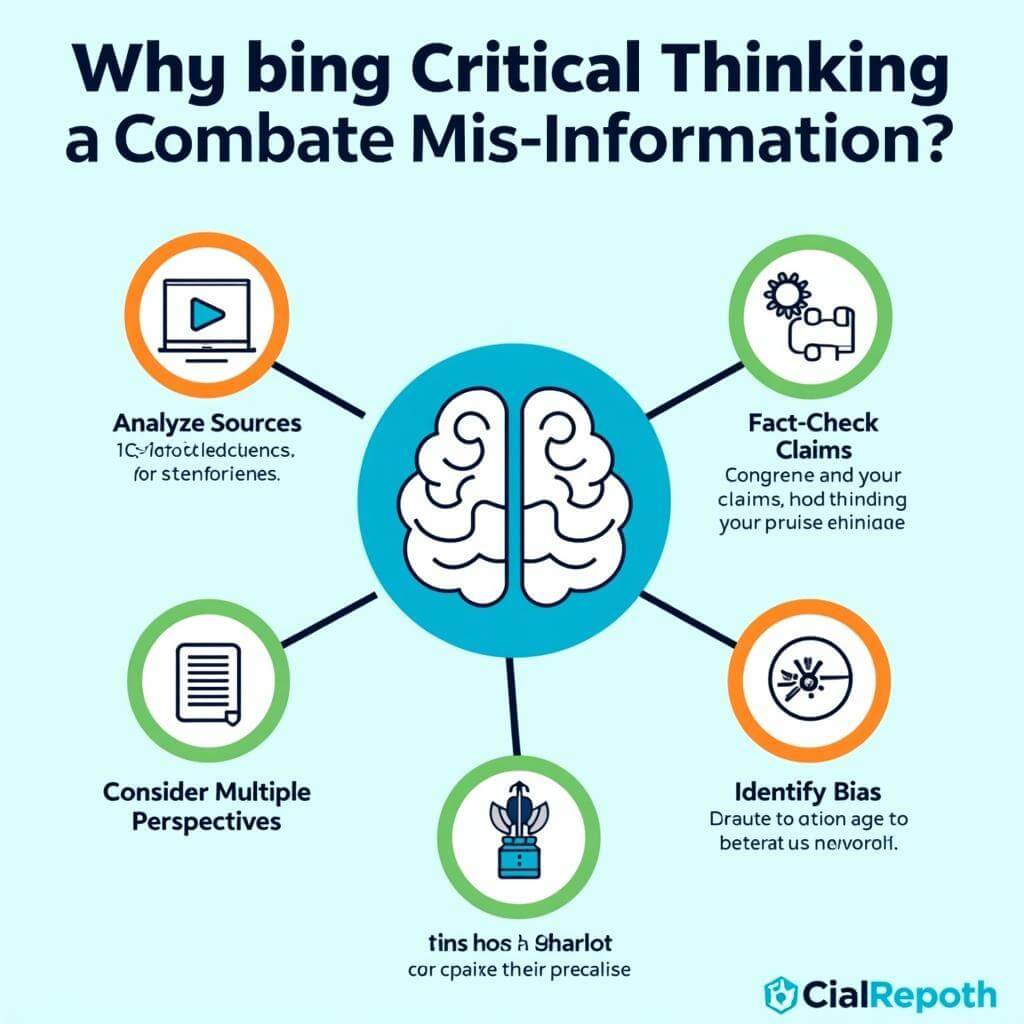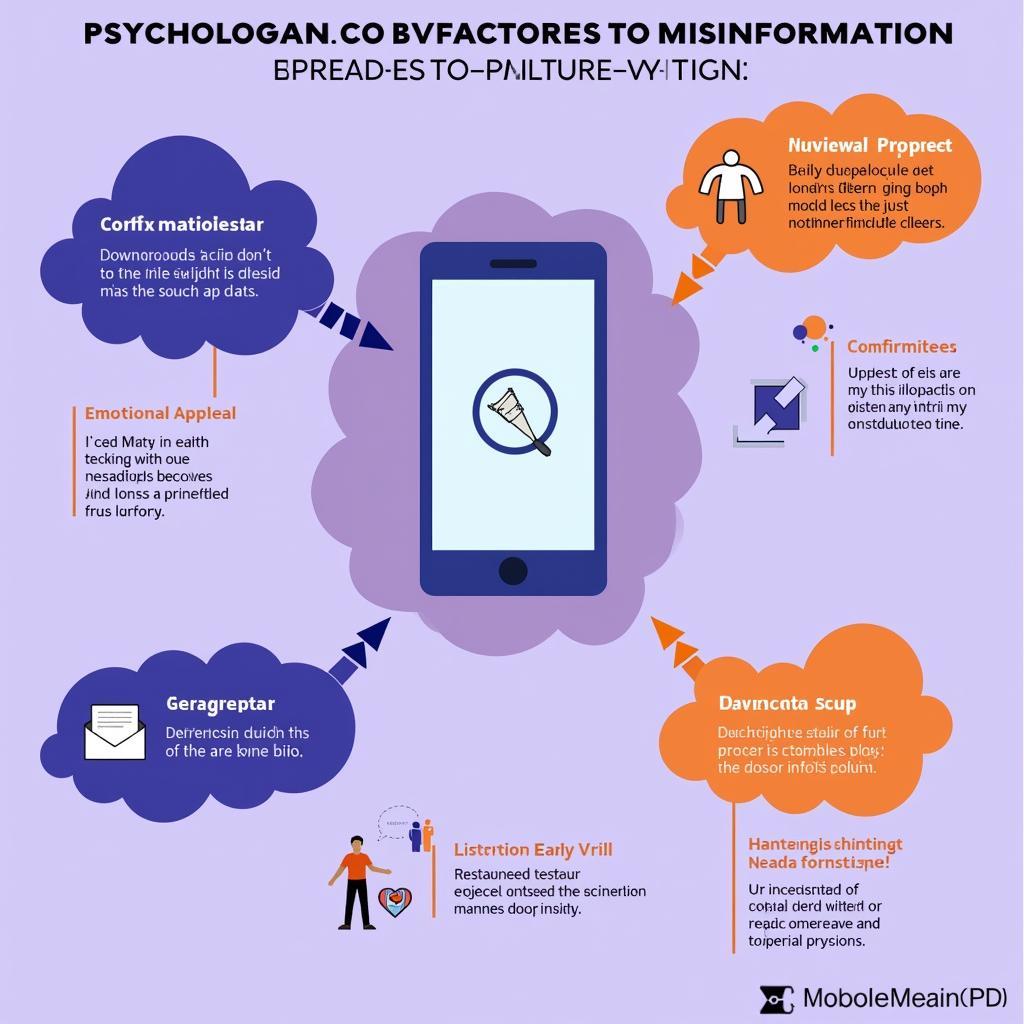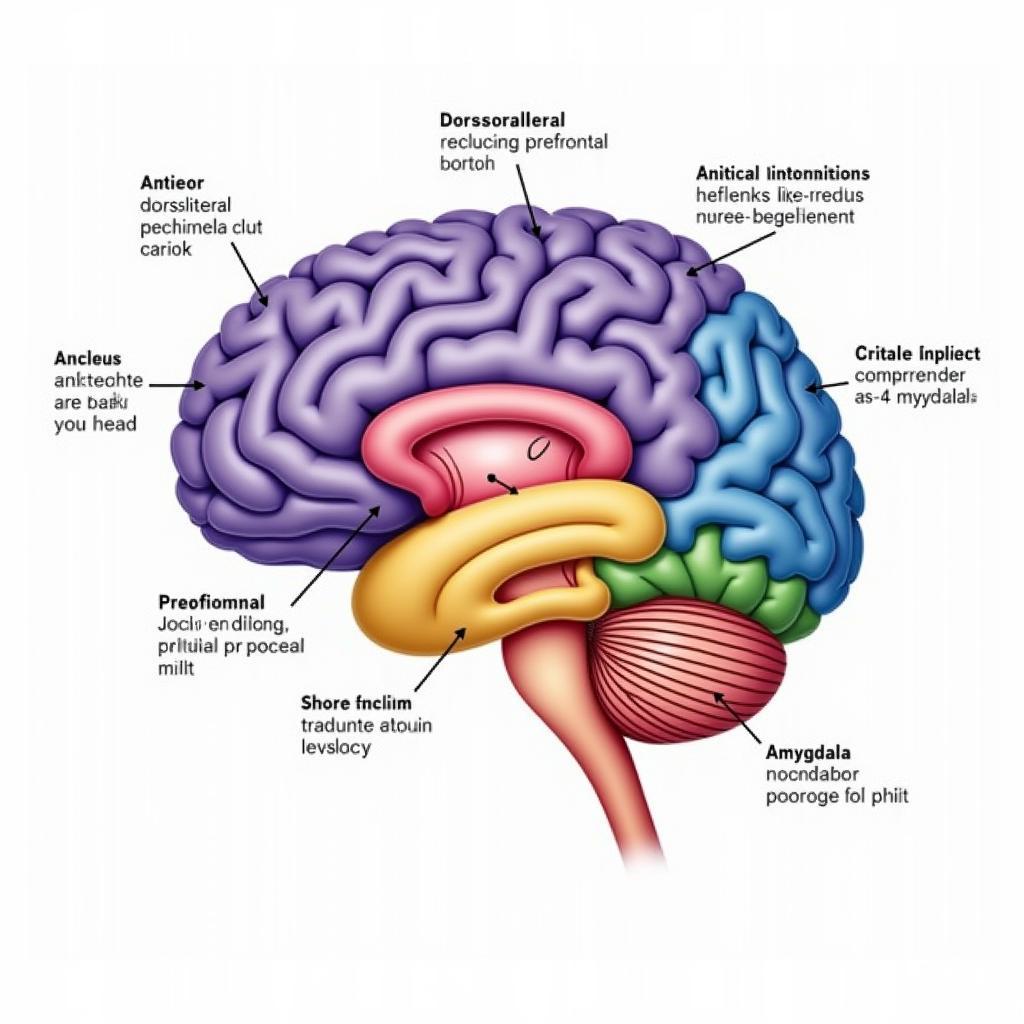The IELTS Reading test often includes passages that challenge candidates’ critical thinking abilities. One such topic that frequently appears is the role of critical thinking in combating misinformation. Let’s explore this theme through a practice IELTS Reading test.
The role of digital literacy in education is closely related to developing critical thinking skills, which are essential for navigating the modern information landscape.
IELTS Reading Practice Test
Passage 1 (Easy Text)
The Importance of Critical Thinking
In today’s digital age, where information is readily available at our fingertips, the ability to think critically has become more crucial than ever. Critical thinking is the process of analyzing, evaluating, and interpreting information objectively. It involves questioning assumptions, examining evidence, and drawing logical conclusions.
One of the primary reasons critical thinking is essential is its role in combating misinformation. With the proliferation of social media and online news sources, false or misleading information can spread rapidly. Critical thinkers are better equipped to identify and challenge such misinformation by scrutinizing sources, fact-checking claims, and considering alternative perspectives.
Moreover, critical thinking skills are valuable in various aspects of life, including education, workplace decision-making, and personal relationships. In academic settings, students who think critically can engage more deeply with course material, formulate stronger arguments, and produce more insightful work. In professional environments, employees who possess strong critical thinking abilities can solve complex problems more effectively and make informed decisions.
Developing critical thinking skills requires practice and dedication. It involves actively questioning information, seeking out diverse viewpoints, and being open to changing one’s mind when presented with compelling evidence. By cultivating these skills, individuals can become more discerning consumers of information and contribute to a more informed society.
 Critical thinking infographic for combating misinformation
Critical thinking infographic for combating misinformation
Questions 1-7
Do the following statements agree with the information given in the passage? Write
TRUE if the statement agrees with the information
FALSE if the statement contradicts the information
NOT GIVEN if there is no information on this
- Critical thinking involves accepting information without question.
- Misinformation spreads quickly on social media platforms.
- Critical thinkers always reject information from online sources.
- Critical thinking skills are beneficial in both academic and professional settings.
- Developing critical thinking skills is a quick and easy process.
- Critical thinking can improve personal relationships.
- Schools are solely responsible for teaching critical thinking skills.
Questions 8-10
Complete the sentences below. Choose NO MORE THAN THREE WORDS from the passage for each answer.
- Critical thinking helps individuals become more __ consumers of information.
- In academic settings, critical thinkers can produce more __ work.
- Developing critical thinking skills requires practice and __.
Passage 2 (Medium Text)
The Psychology of Misinformation
The spread of misinformation has become a significant concern in recent years, particularly with the rise of social media and online news platforms. Understanding the psychology behind why people believe and share false information is crucial in developing effective strategies to combat this phenomenon.
One key factor in the propagation of misinformation is confirmation bias. This cognitive bias leads individuals to seek out, interpret, and remember information that confirms their existing beliefs while disregarding contradictory evidence. In the context of social media, this can result in echo chambers where people are exposed primarily to information that aligns with their preexisting views, reinforcing their beliefs and making them more susceptible to misinformation that supports those beliefs.
Another psychological aspect that contributes to the spread of misinformation is the illusory truth effect. This cognitive bias causes people to believe information is true after repeated exposure, regardless of its actual veracity. In the fast-paced world of social media, where content is shared and reshared rapidly, false information can quickly gain traction and be perceived as true simply because it has been encountered multiple times.
The emotional appeal of misinformation also plays a significant role in its dissemination. Content that evokes strong emotions, such as fear, anger, or excitement, is more likely to be shared and remembered. Misinformation often exploits these emotional triggers, making it more compelling and shareable than factual information that may be perceived as dry or uninteresting.
Social proof is another psychological principle that influences the spread of misinformation. When individuals see that many others believe or share certain information, they are more likely to accept it as true, even without verifying its accuracy. This can lead to a snowball effect, where misinformation gains credibility simply because of its widespread acceptance.
Combating misinformation requires a multifaceted approach that addresses these psychological factors. Media literacy education can help individuals develop critical thinking skills and become more aware of their own biases. Encouraging fact-checking habits and promoting diverse information sources can help break echo chambers and expose people to a wider range of perspectives.
The impact of social media on public health is closely linked to the spread of misinformation, making critical thinking skills essential for evaluating health-related content online.
Additionally, social media platforms and news organizations have a responsibility to implement measures that curb the spread of false information. This may include algorithms that prioritize credible sources, clear labeling of unverified content, and systems for fact-checking viral posts.
Ultimately, addressing the psychology of misinformation is crucial for fostering a more informed and critically thinking society. By understanding the cognitive biases and social factors that contribute to the spread of false information, we can develop more effective strategies to promote truth and accuracy in our increasingly digital world.
 Psychology of misinformation on social media platforms
Psychology of misinformation on social media platforms
Questions 11-16
Choose the correct letter, A, B, C, or D.
-
According to the passage, confirmation bias leads people to:
A) Seek out diverse opinions
B) Challenge their existing beliefs
C) Ignore information that contradicts their views
D) Always fact-check new information -
The illusory truth effect suggests that:
A) People believe information is true if it’s repeated often
B) True information is always easy to recognize
C) People only believe information from reliable sources
D) Repeating false information makes it true -
Which of the following is NOT mentioned as a factor contributing to the spread of misinformation?
A) Emotional appeal
B) Social proof
C) Financial incentives
D) Confirmation bias -
Media literacy education is suggested as a way to:
A) Increase the spread of misinformation
B) Develop critical thinking skills
C) Create more echo chambers
D) Promote emotional responses to information -
The passage suggests that social media platforms should:
A) Allow all content without restriction
B) Implement measures to curb false information
C) Only permit government-approved information
D) Encourage users to share more content -
The main purpose of the passage is to:
A) Criticize social media users
B) Promote a specific social media platform
C) Explain psychological factors behind misinformation spread
D) Argue against freedom of speech online
Questions 17-20
Complete the summary below. Choose NO MORE THAN TWO WORDS from the passage for each answer.
The spread of misinformation is influenced by various psychological factors. (17) __ causes people to seek information that supports their existing beliefs, while the (18) __ makes repeated false information seem true. Content with strong (19) __ is more likely to be shared. To combat misinformation, it’s important to promote (20) __ and expose people to diverse information sources.
Passage 3 (Hard Text)
The Neuroscience of Critical Thinking and Misinformation Resistance
The human brain’s remarkable plasticity allows it to adapt and learn throughout life, but this same flexibility can make it susceptible to misinformation. Neuroscientific research has begun to shed light on the neural mechanisms underlying critical thinking and the brain’s response to false or misleading information. Understanding these processes is crucial for developing effective strategies to enhance critical thinking skills and combat the spread of misinformation in our increasingly complex information ecosystem.
Critical thinking engages multiple brain regions, primarily within the prefrontal cortex (PFC), which is responsible for executive functions such as planning, decision-making, and impulse control. The dorsolateral prefrontal cortex (DLPFC) plays a particularly significant role in analytical reasoning and cognitive control. When individuals engage in critical analysis, functional magnetic resonance imaging (fMRI) studies have shown increased activity in the DLPFC, suggesting its importance in evaluating information and forming judgments.
The anterior cingulate cortex (ACC) is another key region involved in critical thinking, particularly in conflict monitoring and error detection. This area becomes active when individuals encounter information that contradicts their existing beliefs or when they need to choose between competing alternatives. The ACC works in concert with the DLPFC to facilitate the cognitive flexibility necessary for considering multiple perspectives and revising one’s beliefs in light of new evidence.
Interestingly, research has shown that individuals with stronger connections between the DLPFC and the ACC tend to be more resistant to misinformation. This enhanced connectivity may allow for more efficient integration of new information with existing knowledge and better detection of inconsistencies or logical flaws.
The brain’s reward system, centered around the nucleus accumbens and involving dopaminergic pathways, also plays a role in how we process information. When individuals encounter information that aligns with their existing beliefs, it can trigger a release of dopamine, creating a sense of pleasure or satisfaction. This neurochemical reward can reinforce confirmation bias, making it more challenging to critically evaluate information that contradicts one’s preexisting views.
Moreover, the amygdala, a region associated with emotional processing, can influence how we perceive and remember information. Emotionally charged misinformation can activate the amygdala, leading to stronger encoding of false memories and making them more resistant to correction. This highlights the importance of emotional regulation in critical thinking and misinformation resistance.
Recent studies have also explored the concept of cognitive inoculation as a means of building resistance to misinformation. This approach involves exposing individuals to weakened forms of misinformation along with explanations of the manipulative techniques used, much like a vaccine exposes the immune system to weakened pathogens. Neuroimaging research suggests that cognitive inoculation may strengthen connections between the DLPFC and ACC, enhancing an individual’s ability to detect and resist false information in the future.
Social media’s role in misinformation during elections underscores the importance of developing robust critical thinking skills to navigate complex political landscapes.
The development of critical thinking skills from a neuroscientific perspective involves strengthening these neural networks through targeted exercises and education. Techniques such as mindfulness meditation have been shown to enhance activity in the PFC and improve cognitive control. Similarly, metacognitive training, which involves reflecting on one’s own thought processes, can strengthen the connections between brain regions involved in critical analysis.
As our understanding of the neuroscience behind critical thinking and misinformation resistance grows, it opens up new possibilities for educational interventions and technological solutions. For instance, neurofeedback techniques could potentially be used to train individuals to activate brain regions associated with critical thinking more effectively. Additionally, AI-powered tools designed to support critical analysis could be developed based on our understanding of the neural processes involved.
In conclusion, the neuroscience of critical thinking and misinformation resistance reveals the complex interplay of various brain regions and processes. By leveraging this knowledge, we can develop more effective strategies to enhance critical thinking skills and build resilience against the flood of misinformation in the digital age. As we continue to unravel the intricacies of how our brains process information, we move closer to creating a more discerning and intellectually robust society.
 Brain regions involved in critical thinking
Brain regions involved in critical thinking
Questions 21-26
Complete the sentences below. Choose NO MORE THAN TWO WORDS from the passage for each answer.
-
The __ is primarily responsible for executive functions such as planning and decision-making.
-
Increased activity in the __ has been observed during critical analysis tasks.
-
The anterior cingulate cortex is involved in __ and error detection.
-
The brain’s __, which involves dopaminergic pathways, can reinforce confirmation bias.
-
The __ influences how we perceive and remember emotionally charged information.
-
__ techniques could potentially be used to train individuals to activate brain regions associated with critical thinking more effectively.
Questions 27-30
Do the following statements agree with the information given in the passage? Write
YES if the statement agrees with the views of the writer
NO if the statement contradicts the views of the writer
NOT GIVEN if it is impossible to say what the writer thinks about this
-
Critical thinking skills can be improved through targeted exercises and education.
-
The amygdala plays a more significant role in critical thinking than the prefrontal cortex.
-
Cognitive inoculation may help build resistance to misinformation.
-
Neuroscientific research on critical thinking has reached its conclusion, with no further discoveries expected.
Answer Key
Passage 1
- FALSE
- TRUE
- NOT GIVEN
- TRUE
- FALSE
- TRUE
- NOT GIVEN
- discerning
- insightful
- dedication
Passage 2
- C
- A
- C
- B
- B
- C
- Confirmation bias
- illusory truth effect
- emotional appeal
- fact-checking habits
Passage 3
- prefrontal cortex
- dorsolateral prefrontal cortex
- conflict monitoring
- reward system
- amygdala
- Neurofeedback
- YES
- NO
- YES
- NO
This IELTS Reading practice test demonstrates how critical thinking is crucial in combating misinformation. By developing these skills, test-takers can improve their ability to analyze complex texts and answer questions accurately. Remember to apply these critical thinking strategies when approaching IELTS Reading passages and questions.
The impact of social media on mental health stigma is another area where critical thinking skills are essential for distinguishing between factual information and potentially harmful misconceptions.


